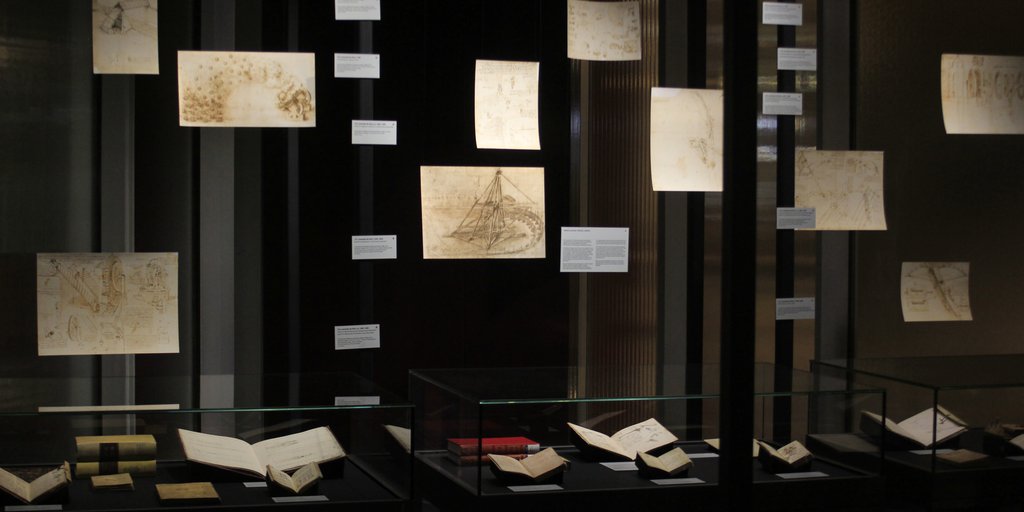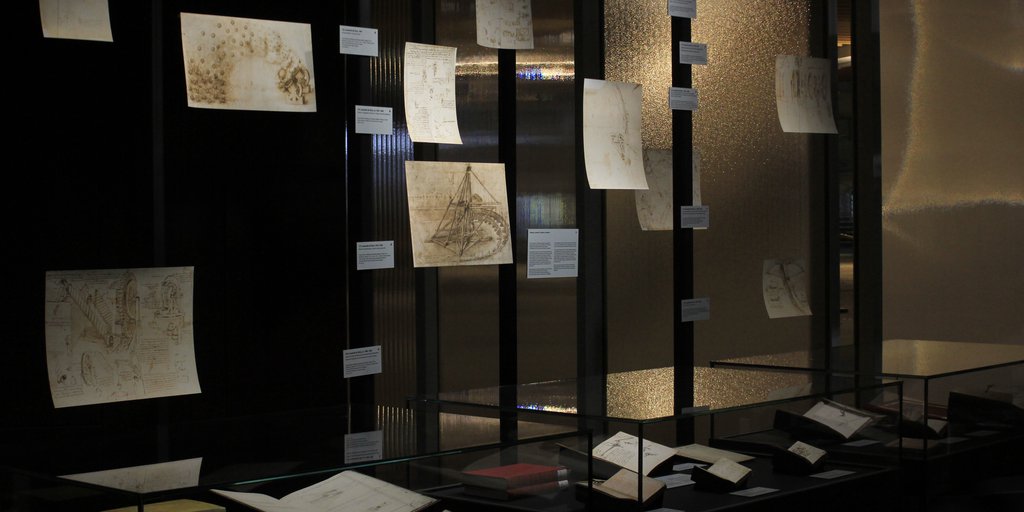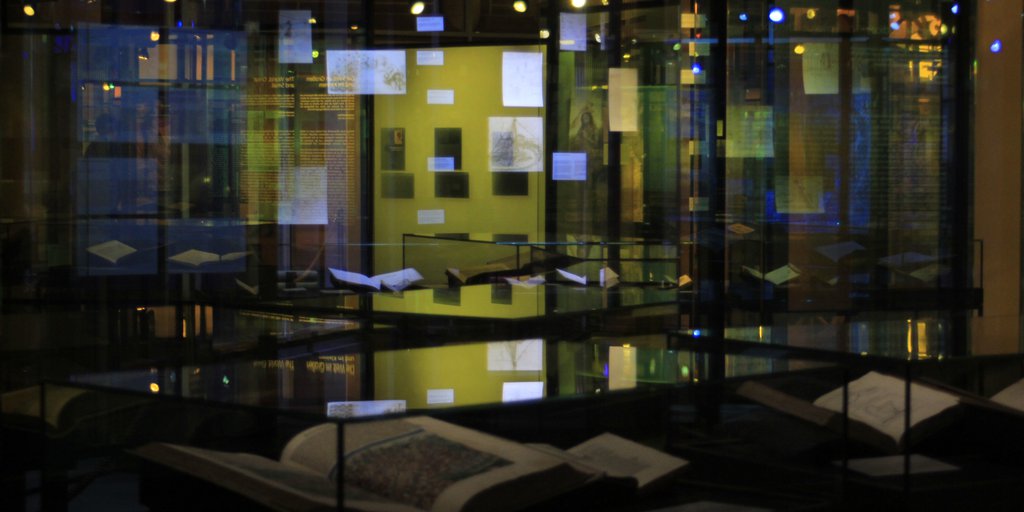
Epilogue: The Codices <
This is a collection without order, compiled from many papers that I have copied here,
hoping to put them in their respective order, according to the subjects they address …
Leonardo da Vinci
Codex Arundel, fol. 1r. Translation: Elizabeth Hughes
Leonardo’s surviving literary estate comprises over 4,000 sheets; a total of 22 volumes of illustrated manuscripts, generally known as codices, still exists today. The material is extremely heterogenous. Alongside pocket-sized sketchbooks with jottings made on the spot purely for his own use, there are large-format clean copies that seem to address an audience. What the volumes have in common is their thematic diversity, and all show traces of continual use and revision. At his death, Leonardo left the volumes to his collaborator and heir Francesco Melzi (1491/92–1567). Melzi’s heirs sold a large part of this legacy to the sculptor Pompeo Leoni (ca. 1533–1608). In 1637 the collector Galeazzo Arconati (before 1592–1649) donated several of these manuscripts to the Biblioteca Ambrosiana in Milan. They ultimately reached Paris as part of Napoleon’s spoils of war where most of them are still kept today—fortunately mostly in their original binding. Other codices took entirely different paths—though under similarly dramatic circumstances.
Codices <
 | 116.
Doomsday 1513–1514 |

Particularly in his later years Leonardo propagated an overpowering idea of doomsday, both in drawings and as an epic text like this passage that was probably intended for his book project Libro di pittura. Inspired by poetic models like Ovid’s Metamorphoses (49 ■), Leonardo’s powerful words evoke the Deluge (“figuratio[n] del djluvio”)—but in the sense of natural history, not the Bible. He focuses mainly on the movement of water masses, the trajectory of rainfall that spreads in waves like dust clouds, and the light phenomena produced by ceaseless lightning. He invokes mythological figures, the sea god Neptune, and the god of the winds—Aeolus—while humans, who are completely powerless, are only marginally mentioned.
References
Bambach, Carmen C. 2019. Leonardo da Vinci Rediscovered. Vol. 3: The Late Years 1506–1519. 4 vols. New Haven / London: Yale University Press, 456–457, (453–472).











